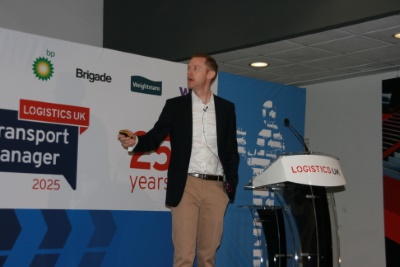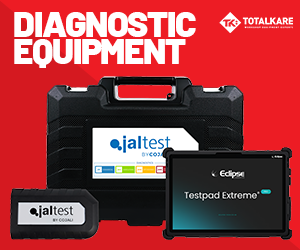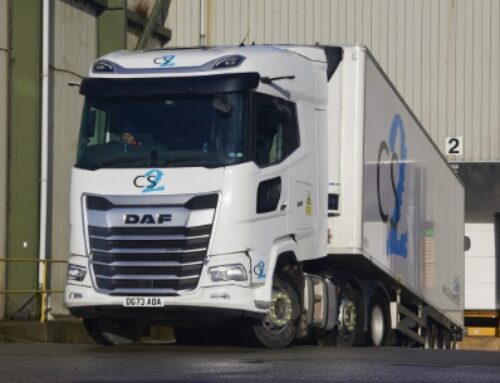Conference: how one incident could prompt three investigations
Chris Powell, a partner at law company Weightmans, explained to the Logistics UK Transport Manager conference how one incident could lead to a company facing investigations by three government agencies, and what the legal and financial consequences might be.
He kicked off by explaining how much of the modern approach to workplace safety came from the Piper Alpha rig disaster in the North Sea back in 1988. What had emerged from investigations was that the disaster was not caused by a single sudden catastrophic failure, but a system that had failed at multiple points, with the outcome being the loss of 167 lives.
Health and safety investigations now centred not just on what went wrong, but how errors got through the system and who should have picked them up.
Mr Powell presented a fictionalised scenario, but one that was actually based on an amalgamation of several real-life incidents and their possible consequences. He looked at what was likely to happen in a company following a fatal accident on its premises, and how the situation should be managed.
He outlined a fictitious story where a fleet had embarked on a ‘decarbonisation journey’ and acquired 25 new alternatively-fuelled tractor units of a make and type never seen before on the fleet. These trucks had the full suite of automated driver assistance systems (ADAS), and were joined by new trailers with electronic brake performance monitoring systems (EBPMS).
The introduction of this new technology meant that the fleet had to find a new third-party maintenance provider.
One day, there was a fatal accident in the company’s yard: an employee was hit by a reversing trailer. Initially, the company found itself being investigated by both the Health and Safety Executive (HSE) and the police.
Mr Powell explained that if a corporate manslaughter charge appeared likely, then the police would retain primacy in the investigation: otherwise it would be handed to the HSE which would investigate and prosecute using health and safety legislation.
In this case, the HSE took the lead, and started to seize documents and interview witnesses.
Within the (fictitious) company, the transport manager and the head of health and safety had already started their own internal investigation and carried out interviews, but all this material was seized by HSE investigators.
Mr Powell explained why the internal company investigation had been a mistake.
“There is no legal privilege covering this material, which was gathered by interviewing shocked and distressed people at the scene in the immediate aftermath of the incident.
“Had the company engaged a lawyer to undertake the interviews, the HSE would have been denied access to the materials as they would have been covered by legal privilege.”
The HSE had access to these transcripts when they interviewed witnesses under caution later on.
The preliminary findings by the HSE were that the reversing vehicle had a brake fault which extended its stopping distance at low speed, and risk assessments covering vehicles on the site were out of date. The vehicle’s driver had not been aware of the brake defect, or the faulty camera.
It found that the legacy transport management system had not kept pace with the technology on the new vehicles. The transport manager believed that as the vehicles were new they were inherently safe, and he was over-reliant on the repair and maintenance contractor to keep everything right.
“As a consequence, driver defect reports were not really looked at, and nor were PMI sheets.
“The transport manager was not aware of the brake defect on the vehicle involved in the incident, but he would have been had he studied the EBPMS data and PMI sheets.
“He did know the camera had a fault, but had decided to leave its rectification until the next inspection. The person who drove the truck that day had not been told about the camera fault, and had received no specific training on the ADAS systems fitted to the trucks.
“Transport regulatory issues were not reported up to the board, although heath and safety issues were.”
If the (fictitious) company had been prosecuted by HSE, it would have faced a £1.6 million fine calculated on company turnover. It would have only narrowly escaped prosecution for corporate manslaughter.
The traffic commissioner would have had to have been informed about the prosecution, and would have called a public inquiry based on the evidence from the criminal proceedings.
At the PI, the transport manager admitted that he was unfamiliar with the new trucks’ safety systems, and he had been over-reliant on the repair and maintenance contractor.
The traffic commissioner questioned the company directors about the absence of guidance for the transport manager around the introduction of the new trucks, curtailed the company’s operating licence, and ordered an audit of transport management systems. The transport manager’s repute was judged to have been tarnished.
But the company’s woes did not end there. The driver of the truck subsequently left the company and took it to an industrial tribunal. He claimed that he had been victimised by company bosses for being a whistleblower, and no allowance had been made for the trauma he had suffered in the accident. He told the tribunal that the company had neglected to train its drivers properly and that it put profit over safety.
He reached an out of court settlement with his former employer.
Mr Powell estimated that the incident would likely have cost the company around £2.5 million in direct costs, reputational damage, and trauma and disruption.
“This is a hypothetical case, but it is made up of real-life incidents,” he said.
Delegates could avoid such problems by promoting company policies covering five key points: maintenance and oversight, health and safety, ADAS and new vehicle technology, transport management, and vehicle specific driver training.
Combined, these would remove 95 per cent of the risk of an HSE prosecution.
Taken individually, PMI reports submitted by maintenance providers needed to be overseen and signed off in a timely manner by a competent person. If a fault emerged on a vehicle, then it needed to be looked for on other similar vehicles. Internal audit reports needed to be kept showing that known problems were identified and dealt with.
Health and safety incident reporting and planning needed to be resilient and covered by legal privilege.
ADAS and other new vehicle technology required commissioning, testing, and driver training as it was introduced to the fleet.
Transport managers needed regular refresher training, and upskilling on new technologies and regulations as they appeared.
Drivers needed vehicle-specific training with feedback mechanisms.
Operators needed safety audit tools which were informed by the latest Guide to Maintaining Roadworthiness and created a record of what was audited. Risks such as wheel-torque problems needed to be identified and acted on.
He urged operators to engage with a legal professional.
“If a lawyer instructs you to undertake an investigation after an incident, then that investigation is covered by legal privilege and cannot be used as evidence against you in court,” he explained.
Pre-emptive action was best: “Have a lawyer on retention, and get directors trained about the consequences that can follow an incident: get the lawyer to conduct a mock trial or investigation,” he urged.













